- What criteria should be followed when choosing a tile?
- What you should pay attention to?
- Bathroom styling rules
- Typical finishing mistakes
Before you start making repairs in the bathroom, you need to carefully select the tiles in the bathroom for decoration, since the bathroom is a room with high humidity that requires a special coating.
Bathroom tile is the most The best way design. This method will protect the room from excessive moisture.
Tiles in the bathroom - an ideal option that will reliably protect walls and floors from high humidity. There are many reasons why you should choose tiles for your bathroom. Compared to other materials, tile has a number of undeniable advantages, such as:

There are three types of tiles, which are marked according to quality (in descending order): red, blue, green.
- moisture resistance;
- ease and simplicity of cleaning without harming the material itself;
- strength;
- durability;
- fade resistance;
- hygiene;
- dielectricity;
- environmental safety, as it is made of harmless materials;
- decorative;
- resistance to temperature changes;
- acceptable prices.
Thanks to all these qualities, tiling remains the most common way to design a bathroom. However, here the question arises, how to choose a tile and by what parameters?
What criteria should be followed when choosing a tile?
In building stores you can now find a wide variety of collections, and for those who are faced with this for the first time, choosing bathroom tiles is quite difficult.
Back to index
What you should pay attention to?
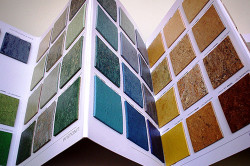
The most suitable option for the bathroom is unglazed tiles with a rough surface.
- Type of tile and its physical properties. According to European standards tile must have a special UNI EN certificate, regardless of the variety. There are three varieties that are marked with the corresponding color: 1 - red, 2 - blue, 3 - green. In addition, if you want to choose a reliable and high-quality bathroom tile, then it must have the following properties: resistance to chemicals, moisture resistance and wear resistance. For the bathroom, the most durable unglazed tiles with a rough surface are considered the safest for flooring, since they do not slip. For walls, the material of the 1st or 2nd group, moisture resistant and resistant to chemistry, is quite suitable. In addition, you need to watch that all purchased finishing material was from the same party and did not differ in tone.
- Format. You can choose tiles of any size. Well-known world brands provide a choice of various formats, ranging from very small - 5 × 5 cm, ending with huge - 90 × 120 cm. The main thing to remember is that the size of the tile should be comparable to the room itself, because large-format tiles visually reduce the room, too small creates a lot of seams, which can lead to rapid corrosion of the walls, and also requires painstaking work. The most optimal is the medium format 20x30 or 20x25.
- Tile colors. When choosing tiles for the bathroom, do not forget about the properties of color, even if you like some kind of pattern or pattern. After all, it is the color of the tile that sets the main color scheme premises. Light and cold colors tend to visually move away, while warm and bright colors are perceived very close. The more colorful and brighter the colors, the visually the room looks smaller. A large bathroom, decorated in too pale colors without eye-catching decorative elements, is likely to give the impression of an operating room. In this matter, it is extremely important to maintain color balance and a sense of proportion. It is best to choose shades that are close to each other in order to avoid excessive variegation or color mismatch.
- Bathroom decor. Although many do not pay due attention to decoration, it is still an important and integral part of a stylish interior. Whatever tile you choose for the bathroom, feel free to use mosaic inserts (panels) or various decorative elements in your design. They only decorate the interior. They look especially impressive and beautiful on a plain background.

The quality of a tile depends on the material used, the shaping method and the number of firings.
If not only is important to you appearance, but the practicality of the decor, there are various bas-reliefs with built-in shelves or hooks for things. To choose the right tile, it is important to take into account the ratio of the scale of the room and the elements used in it. The room should be spacious enough so that the mosaic or other decor can be seen.
Back to index
Bathroom styling rules
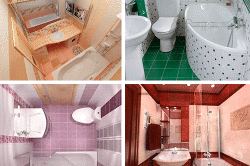
Thanks to the wide range of tiles on the market, you can design a bathroom in any style and for every taste.
With the help of finishing the bathroom with tiles, you can bring to life any style interior solution. There are several key patterns that should be followed when decorating any room:
- the selection of tiles for the bathroom largely depends on the size of the room, light colors can visually expand small space, while the dark ones will reduce it; vertical pattern visually stretches the walls up, creating the feeling of a high ceiling;
- artificial lighting affects the shades of the tile and can greatly change them;
- a colorful large ornament slightly reduces the space of the bathroom, but at the same time gives the surface integrity;
- glossy surfaces artificial lighting create glare, tiring the eyes.
All this should be taken into account when selecting bathroom tiles. If you have found a bathroom tile with a suitable design and properties, it remains to carefully check the quality and condition so that there are no scratches, chips, cracks or bumps.
There are a huge number on the market various kinds ceramic tiles for indoor and outdoor spaces - bathrooms, kitchens, hallways, living rooms and even bedrooms. Every year, designers from leading countries of the world replenish the range of ceramic tiles with new collections in classic and modern styles.
Purpose
Universal tile has high performance properties and almost does not absorb moisture, which allows it to be used for cladding both walls and floors.
Porcelain stoneware is a very durable material that is produced with the addition of granite chips and has a high level of protection against mechanical and chemical influences, which allows the material to be used indoors and outdoors.
The production technology of clinker tiles will allow to achieve an increased level of strength and a low level of water absorption. The main scope of material - finishing of facades and steps of ladders.
Surface type
Glossy bathroom tiles, as sales statistics show, are more popular than matte ones. It looks brighter and more spectacular because of the shine, which creates the appearance of volume, gloss and purity. In care, it is more demanding, stains and prints are better visible on it.
Matte bathroom tiles have become popular not so long ago, but are already actively used in decoration. It does not glare in the light, is easy to care for and gives the room a more expressive and cozy look.
Wear classes
Class PEI I (1) - tiles used in areas with low traffic. Suitable for bedrooms and bathrooms.
Class PEI II (2) - tiles for residential buildings with low traffic. Applicable in indoor residential and commercial areas except kitchen, corridor, stairs and balconies.
Class PEI III (3) - tiles for rooms with a medium level of traffic. Suitable for use in residential areas, including kitchens and hallways, as well as hotels and offices.
Class PEI IV (4) - tiles for rooms with constant high traffic. It has a high level of resistance to abrasion, so it can be used not only in residential, but also in public spaces.
Class PEI V (5) - a universal type of tile for rooms with high traffic and intensive use. The tile is resistant to various external damages, suitable for use in any residential and commercial premises.
Chemical resistance classes
Depending on the level of chemical resistance, all types of ceramic tiles are divided into 5 classes:
AA class tiles are not affected by chemical elements. It is applied to finishing of chemical laboratories, medical institutions, and also on industrial productions.
Class A is resistant to certain groups of chemical elements. Suitable for residential use.
Class B is slightly susceptible to chemical attack, in which the appearance of the tile is partially changed. Suitable for use in kitchens and bathrooms.
Class C is highly exposed to chemistry, almost completely changes the appearance.
decorative elements
Any collection of ceramic tiles consists of a background and decorative elements: borders, decor, panels, mosaics, plinths (sold individually).
Glass or ceramic mosaic tiles are a very beautiful and durable finishing material. The scope is very extensive - it can be used for finishing pools, backsplashes in the kitchen, screens under the bathroom, as well as complex wall reliefs.
Decor - tiles with a pattern or pattern applied to the surface. It can be laid in a continuous pattern in a row, as well as pointwise, depending on the design - usually a bathroom.
Panel - a composition of several tiles that form a complete picture. Adds more color and variety to the collection. Decorative panels are usually placed in the part of the room where it is best seen.
Plinth - a narrow decorative element, usually rounded at the top. It serves to harmoniously transition from wall to floor. Not all tile collections have such decorative elements, but there are companies that make custom-made skirting boards.
The border is a decorative element of the tile that gives the collection a finished look. It is available both as part of the collection and separately.
Reference article based on the expert opinion of the author.
If you already have a fix idea, choose your dream color and let it be the starting point for picking the rest of the shades. The main thing is not to overdo it with accents.
Do not choose more than three different colors. To navigate in all the variety of design options, it is best to look for photos of ready-made premises.
The room you want to decorate is small and you need to visually expand it? Use light colors. The classic option for the bathroom is white tiles.
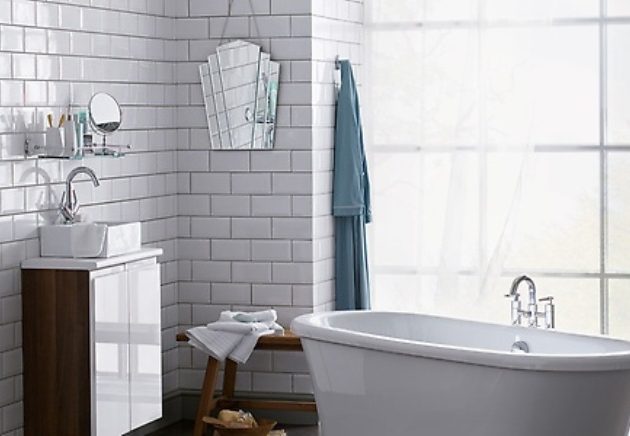
If you think it's too banal, give preference to beige, peach or blue.

The floor and walls, laid out with one type of tile, mostly light and glossy, will visually expand the space and add air.
Andrey Lyamin-Borodin, General Director of the Internet service for ordering repairs Rewedo.ru
It is believed that cool colors create the effect of freshness and coolness, while warm colors soothe. One of the current trends is the design of rooms in natural shades.
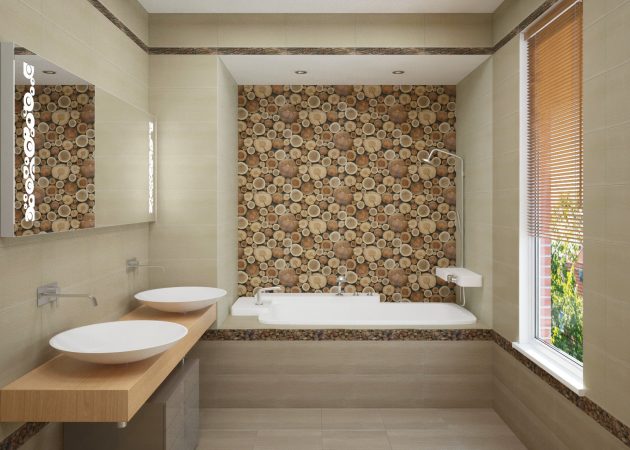
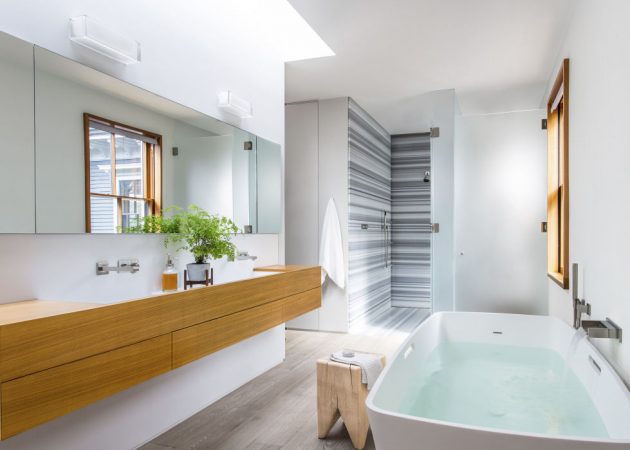
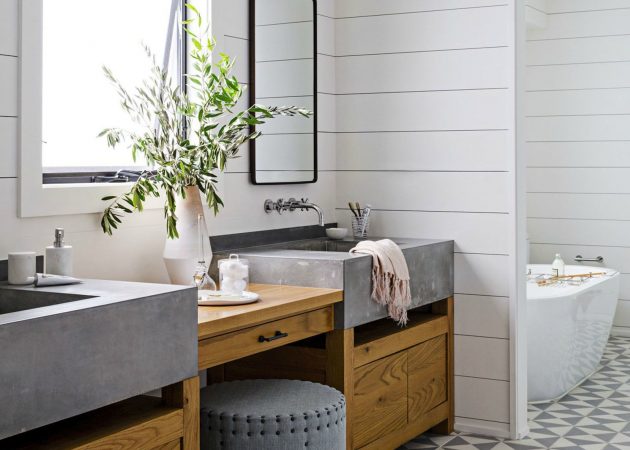
Dark tiles create a depressing impression. Contrary to popular belief, dirt is clearly visible on it. Use dark colors carefully. For example, for decorating the floor and the lower part of the walls.
Avoid very bright colors, such as scarlet or gold. In such rooms, you will get tired very quickly.
Use bright or patterned tiles to create accents or a room.
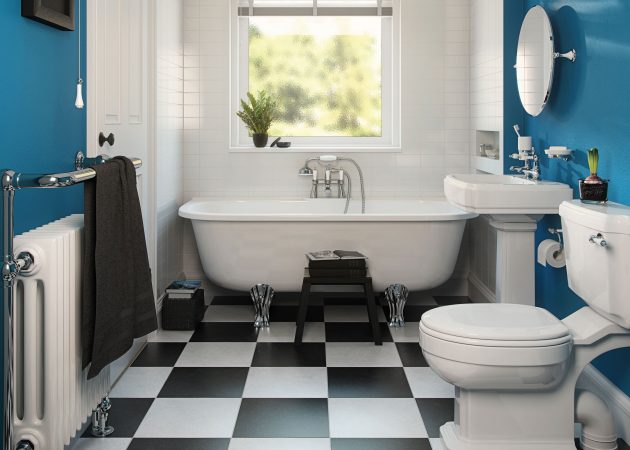
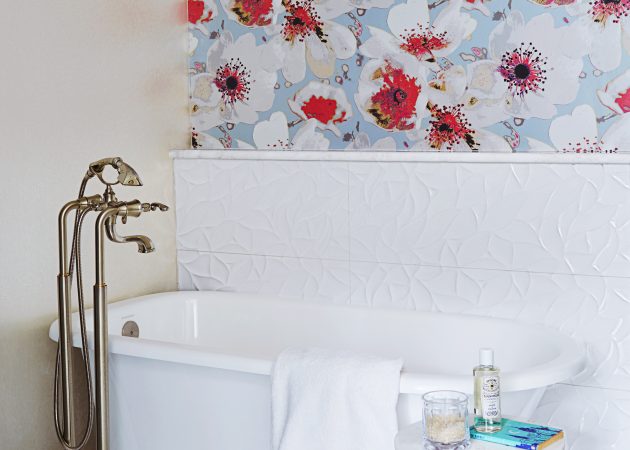
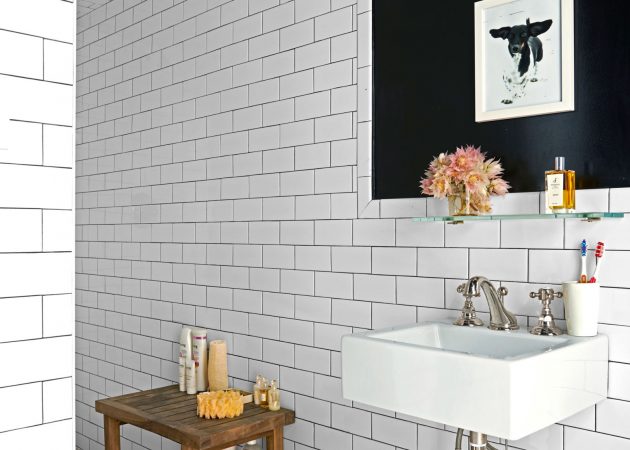
When choosing a tile for the kitchen, match its color with the set.
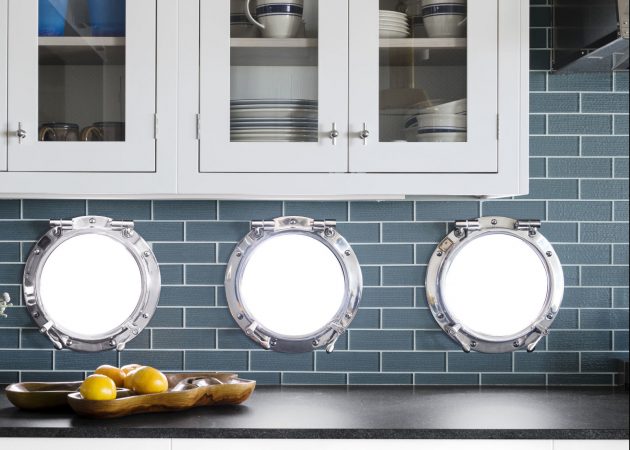
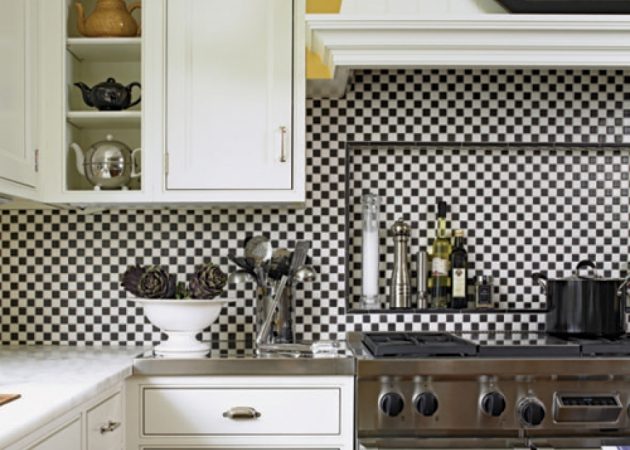
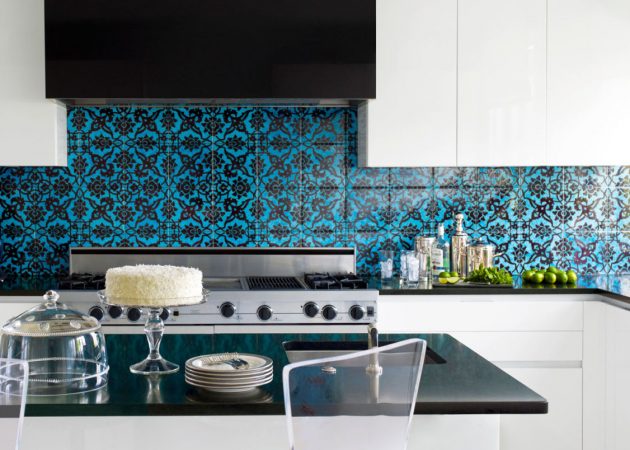
How to choose the shape and size of tiles
Most often, stores offer square or rectangular tiles. If you're remodeling your own, check out these classic options. It is much more convenient to work with them than with unusually shaped tiles.
Want to achieve different visual effects? Use a rectangular tile. Place it on the walls vertically, and you will stretch them in length, horizontally - in width. To visually expand the room, lay out the floor tiles diagonally.
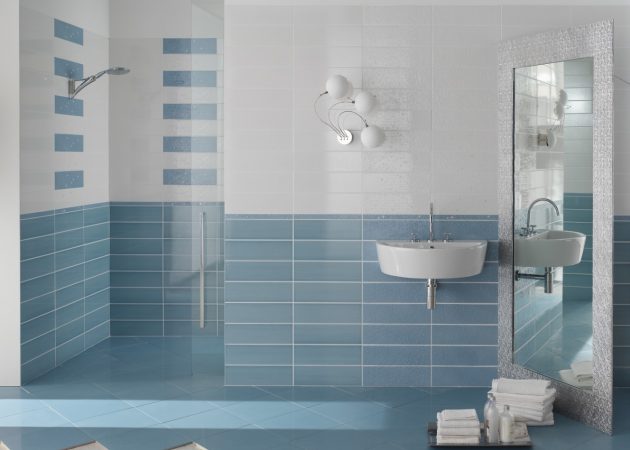
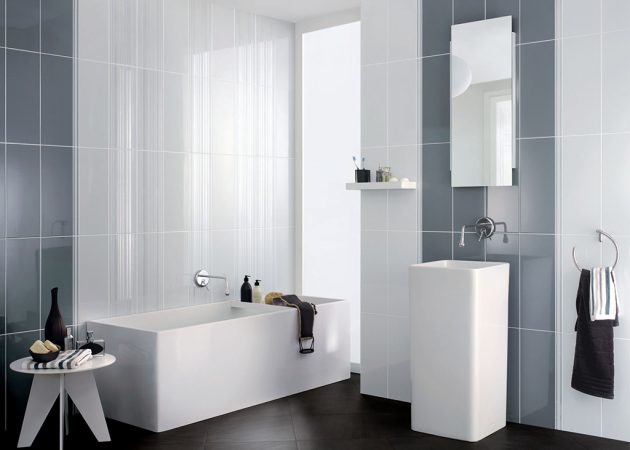
Don't choose very small tiles for small spaces. Also give up the idea of decorating a room in a mosaic style. It greatly narrows the space. Do not use very large tiles. With it, there will be large seams on the walls, which will also unprofitably divide the room into parts.
It is also worth avoiding extremes for reasons of economy.
From the point of view of practicality and cost of work for walls, it is better to choose medium-sized tiles. Too small or, on the contrary, large format can cause an extra charge when laying. Mosaic is on average more expensive than ordinary tiles, and working with it will also not be cheap.
Andrey Lyamin-Borodin
How to calculate the required number of tiles
Measure the length of the walls and their height and multiply these numbers. From the resulting product, subtract the area of the door (if necessary, also the area of \u200b\u200bthe bath). Calculate the floor area.
Then calculate the area of one tile by also multiplying its length by its width. Dividing total area walls or floors per area of one tile, you decide on the number of the latter.
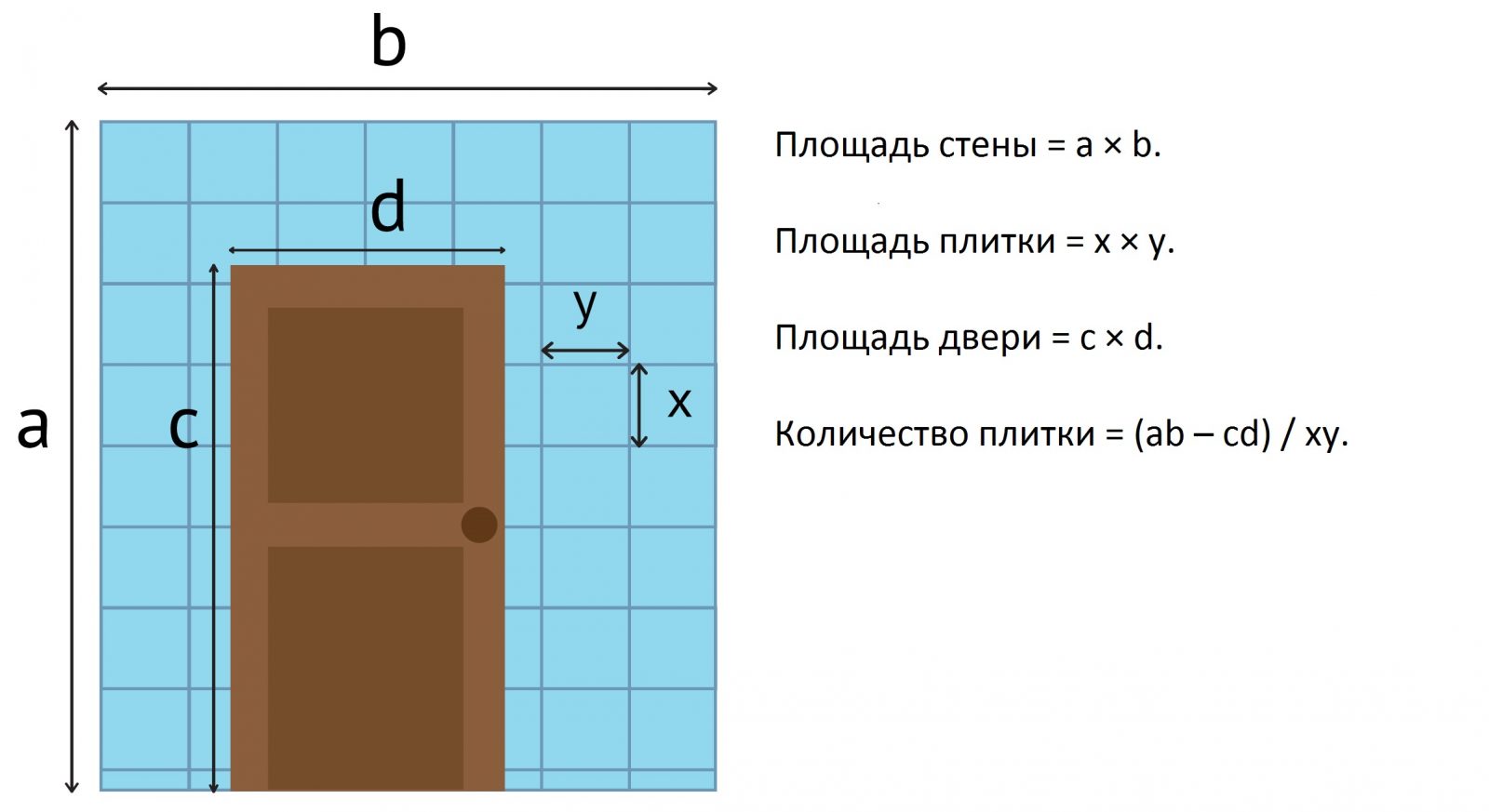 An example of calculating tiles for a wall with a door
An example of calculating tiles for a wall with a door When in doubt, use any online tile calculator.
Do not forget to add 10–15% to the value obtained, since part of the tile will inevitably be damaged during transportation or installation.
Naturally, this is the most primitive way to calculate tiles. With an unusual layout, you may need the help of professionals who will make correct drawing and, based on it, calculate the required amount of materials.
How to choose a tile of the desired structure and quality
If you're choosing tiles for your home, it doesn't make sense to opt for super-sustainable materials that are essential for decorating common areas. It is unlikely that the same number of people will walk in your kitchen or bathroom as people visit cinemas or exhibitions.
Choose tiles with a wear resistance coefficient from I to III (III - for the floor) and do not overpay.
If you are not going to arrange a large freezer or solarium from your apartment, then the temperature resistance of the tile should not be taken into account either.
When choosing tiles for the bathroom, pay attention to characteristics such as water resistance and relief (for the floor).
The tiles of Italian and Spanish production are considered to be of the highest quality. To save money, combine expensive tiles with cheap ones.
Many Russian manufacturers, such as Kerama Marazzi, Keramin, Italon, offer tiles of acceptable quality. It can be taken as a base, pointwise complemented by a more expensive and expressive one, or, for example, a mosaic.
Andrey Lyamin-Borodin
But you need to be careful when buying tiles with huge discounts. The fact is that a low-grade product, presented as a better one, can get on sale. The coating from such a tile will come out sloppy.
How to check the quality of a tile
The marriage of a tile is chips, cracks, uneven geometry and a difference in height between different tiles. If, after buying a tile and unpacking it at home, you find such defects, go to the store and return the defective product.
Andrey Lyamin-Borodin
There are ways to check the quality of tiles before buying:
- View the tile against the light: this way, possible cracks and other imperfections are better visible on it.
- To assess the flatness of the material, place two tiles against each other and check how tightly the surfaces fit. Take a couple of tiles from different boxes and attach them to each other in the same way.
- To assess possible slippage, drop water on the tile and run your finger over it.
If you opened the package with tiles and found a marriage, write a claim. In this case, you can either bring low-quality tiles to the store yourself, or ask a broker to come (it happens that half of the package is already on the wall).
The broker will draw up an act on the non-compliance of the goods with the declared characteristics and send your claim to the manufacturing plant. There, your appeal will be considered and, if deemed justified, the product will be replaced with an appropriate quality. As you can imagine, the process is not fast. If a renovation is in progress, it's often easier to buy a new pack of tiles.
Can I return a tile to the store if there is an error in the calculation? According to Andrey Lyamin-Borodin, this is possible if you bought tiles with a large supply and you still have whole packages. According to the law, tiles can be returned within 14 days from the date of purchase, excluding this day. Some manufacturers offer customers buyback as a bonus, but this only applies to budget tiles.
Do you know any tile selection hacks? Share them in the comments.
The floor is significantly different from the tiles that are used for wall cladding. After all floor version should be stronger and more wear-resistant, since it has a greater load than wall tiles. Therefore, it is necessary to choose it especially carefully.
Key parameters to pay attention to
The main requirements for the floor in difficult places such as kitchens, bathrooms or toilets are strength, moisture resistance, fire resistance, durability and, of course, ease of cleaning. It is also desirable that the coating has anti-slip properties and has a good design.
When choosing floor tiles pay attention to its features that noticeably distinguish this coating from similar wall options. So, floor tiles are different:
- thick (it is noticeably larger and thicker than the wall, as a result of which it is stronger);
- wear resistance class (it is a priori higher than that of other coating options, as it is intended for service in a room with intense load);
- ability to withstand mechanical loads;
- anti-slip surface;
- resistance to chemicals (after all, wall tiles are washed less often than floor tiles).
To date, there are several classes of wear resistance of floor tiles. 1 and 2 are those that are mainly used in rooms with a small load (for example, a bathroom and a toilet). Class 3 is usually used for rooms with an average level of exploitation (usually such tiles are used in any residential area, including in the kitchen). 4 - the one that is used for finishing rooms with high traffic people, for example, in the hallway. The most wear-resistant class 5 is usually used in crowded places - restaurants, shops, offices, etc.
Carefully study the label to verify the wear resistance class with your needs. After all, if you get a weak material, it will quickly crack. And yes, you don't have to pay extra.
When purchasing floor tiles, be sure to make sure that it is exactly the floor. A foot is drawn on it as an identification element. An increased wear resistance class is depicted as a shaded foot. A snowflake, which is depicted on a tile or package, indicates that the tile is frost-resistant, but at the same time has low moisture absorption.
The choice of tile depends on what room you are going to use it for. So, for example, if for the kitchen, then it must necessarily withstand frequent exposure to moisture, as well as treatment with detergents, while remaining durable and attractive in appearance. In addition, her distinctive feature there must be a base that does not allow moisture and grease to be absorbed into the surface and remain there in the form of dark and ugly spots.
This parameter must be checked very clearly. After all, if the tile absorbs all the dirt, the coating will have to be changed after a couple of months.
The tile that is used for the bathroom should have a smooth (not porous!) Surface, which at the same time absorbs moisture well. by the most the best option in this case, it will become porcelain stoneware. But glazed tiles are also suitable, which, if laid correctly, should withstand frequent wetting, which will not affect their quality for many years.
The main parameter that you need to focus on when choosing floor tiles is safety. After all, a slippery tile coating can become a source of frequent household injuries, often serious ones. Therefore, experts recommend choosing tiles with a matte surface, and for rooms with high humidity - also embossed. For the corridor, in no case can you choose a relief one, otherwise you risk dooming yourself to endless cleaning of the floor, which will not be effective. Dirt will get into the grooves on the tile, and it will be quite problematic to get it out of there. For the corridor, the abrasion of the tile is very important. After all, here the effect on ceramics is exerted by various debris, sand and particles of dirt and dust that enter the house on the soles of shoes. But in any case, tiles for such active areas of the house will be an order of magnitude better than wood flooring.
floor tile design
Floor tiles can be of various designs - from classic to modern. The classics are easier to lay down, since they fit much easier and combine more correctly. At the same time, you need to choose the design of the tile, based on the overall design of the apartment. After all, if the whole kitchen is a classic version, and you cover the floor with art-house tiles, there will be a complete imbalance.
The price of a tile often depends on its design. Therefore, try to weigh the pros and cons for purchasing one or another option.









